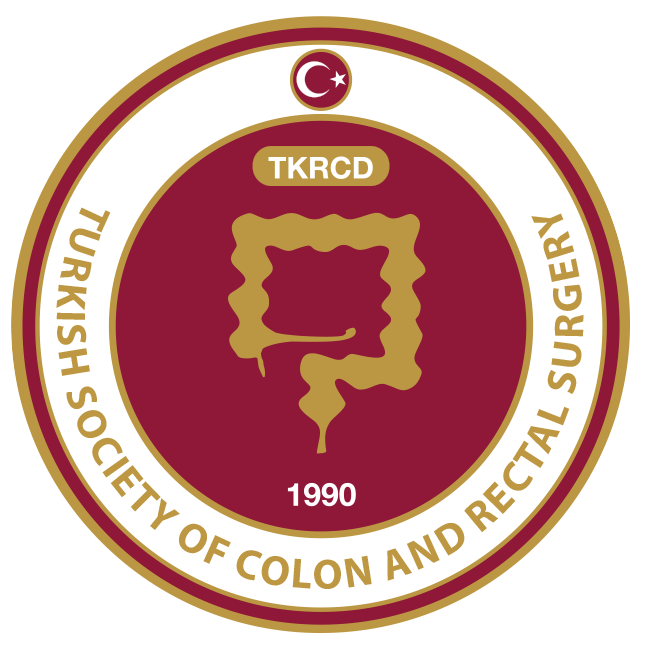ABSTRACT
Lower gastrointestinal bleeding is defined as bleeding that originates distal to the ligament of Treitz. Neoplasms causing lower gastrointestinal bleeding generally originate from the colon. A similar clinical picture can sometimes be caused by the invasion of the colon wall by intra-abdominal masses. Perivascular epithelioid cell tumors (PEComas) are mesenchymal neoplasms composed of histologically and immunohistochemically epithelioid or spindle cells, with immunoreactive properties for smooth muscle and melanocytic markers. The differential diagnosis of patients being evaluated for an intra-abdominal mass should be made meticulously. In the presence of atypical signs, extra care should be taken. This paper reports a case of an ovarian malignant PEComa presenting with melena from an ulcerated lesion in the transverse colon.
Introduction
In 1992, Bonetti et al.1 proposed the term “perivascular epithelioid” to describe morphologically and immunohistochemically unusual cell types with a perivascular distribution. These cells are immunoreactive for melanocytic markers, have an epithelioid appearance and a clear acidophilic cytoplasm, and show a perivascular distribution. Over time, this nomenclature has been applied to a family of tumors, including angiomyolipoma, clear cell sugar tumors, lymphangioleiomyomatosis, clear cell myomelanocytic tumor of the falciform ligament, and other unusual clear cell tumors. In 2002, due to the diversity within the perivascular epithelioid cell tumor (PEComa) family, the World Health Organization defined the diagnosis of PEComa as a “mesenchymal tumor composed of histologically and immunohistochemically distinct perivascular epithelioid cells”.2 Malignant PEComas are estimated to occur in 0.12–0.24 per million people worldwide.3
We present an extremely rare case of ovarian PEComa with melena from a clinicopathological perspective.
Case Report
A 46-year-old woman presented with intermittent watery, tarry stools, accompanied by a change in stool frequency. On physical examination, a mass was palpated in the midline of the abdomen, and melena was also noted. Dynamic contrast-enhanced magnetic resonance imaging depicted a 21x14x10 cm right ovarian lesion with irregular borders and contrast enhancement (Figure 1). Colonoscopy revealed a 2x2 cm ulcerated lesion in the transverse colon. Although the histopathological examination of the biopsy showed malignant features, a clear diagnosis could not be made; therefore, the council decided to proceed with surgery. Exploratory laparotomy revealed a soft, fragile mass lesion with irregular borders invading the transverse colon (Figure 2). During surgery, en bloc resection of the mass with the transverse colon was performed. The frozen section analysis confirmed that the surgical margins were negative and ruled out adenocarcinoma. Immunohistochemistry examinations are summarized in Table 1. The final pathology indicated PEComa, as the tumor was large (≥5 cm), exhibited high nuclear grade cellularity, contained areas of coagulation necrosis, and had a high mitotic index (2 figures per 50 high magnification fields) and a cellular character (Figure 3). A positron emission tomography-computed tomography (CT) scan detected no residual lesion or metastasis. The patient’s clinical follow-up protocol was determined by the multidisciplinary tumor board, and the patient received no further treatment. At the 6-month follow-up, the patient had no complaints, and abdominal and thorax CT scans were normal. Informed consent was obtained from the patient for this case report.
Discussion
We presented a rare case of ovarian PEComa. The colonoscopic biopsy performed for differential diagnosis did not provide a definitive pathological diagnosis. Furthermore, diagnosing this rare condition proved challenging even in the final pathology after surgery.
In the PEComa family, cells are located around small-to-medium-sized vessels and seem to form a vessel wall. It is necessary to make differential diagnoses of tumors with clear cell morphology from other spindle and epithelioid mesenchymal neoplasms, including gastrointestinal stromal tumors, tumors with positive melanocytic antigens (melanoma, clear cell sarcoma, smooth muscle cell tumors, and adrenal cortical cancers), rhabdomyosarcoma, myoepithelial tumor, mature adipose tissue tumors, and alveolar sarcomas. Clinical, morphological, and immunohistochemical features are considered for differential diagnosis.4 PEComa express melanocytic markers [e.g., GB100 protein (HMB45), Melan-A, tyrosinase, and microphthalmia-associated transcription factor (MITF)]. They have a granular eosinophilic cytoplasm and express smooth muscle markers (e.g., smooth muscle actin, pan-muscle actin, muscle myosin, calponin, and h-caldesmon).5 The most commonly expressed in cutaneous and sclerosing PEComas is desmin.6 The most sensitive markers for PEComa are HMB45, Melan-A, and MITF.7 This case of PEComa was positive for immunohistochemical staining of HMB45, Melan-A, and desmin.
No clear optimal management strategy has been established in the treatment of PEComa. The most common treatment is surgical intervention. Treatment modalities (e.g., radiotherapy and chemotherapy) can be used in high-risk lesions. Neoadjuvant therapy has been administered in a limited number of cases, but desired outcomes have not been achieved. In a small group of patients, a diagnosis cannot be made without surgical resection, which leads to the inability to determine the treatment and to reduce its effectiveness. Heterogeneous results were achieved in the chemotherapy treatment of PEComas. Based on the current literature, it is difficult to determine the best chemotherapy regimen and efficacy.8, 9 The role of radiation therapy for PEComa remains unclear.8, 10 A specific group within the PEComa group shows aggressive features. The malignancy criteria in PEComas include histological features, a high mitotic index, tumor size of ≥5 cm, and the presence of vascular invasion and necrosis (Table 2). Meticulous follow-up and treatment plans should be made in this group.
PEComas tend to develop local recurrence or distal metastases, most commonly to the lung. Metastatic spread may occur years or decades after curative surgery. No definitive treatment has been described in the literature to date. Surgery is the optimal treatment option whenever appropriate, particularly in oligometastatic patients. Although treated with systemic chemotherapy regimens, their efficacy is relatively low. In addition, better survival rates were reported up to 12 months onset from the diagnosis of metastatic disease without any adjuvant therapy. The use of mTOR inhibitors as targeted therapies holds promise.11
Although our case had malignant features, no adjuvant treatment plan was made due to the absence of metastatic disease, and clinical follow-up was deemed appropriate according to oncological principles.



